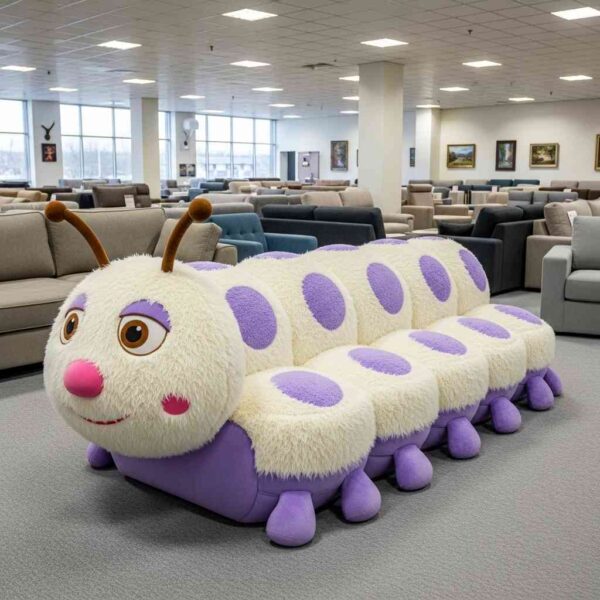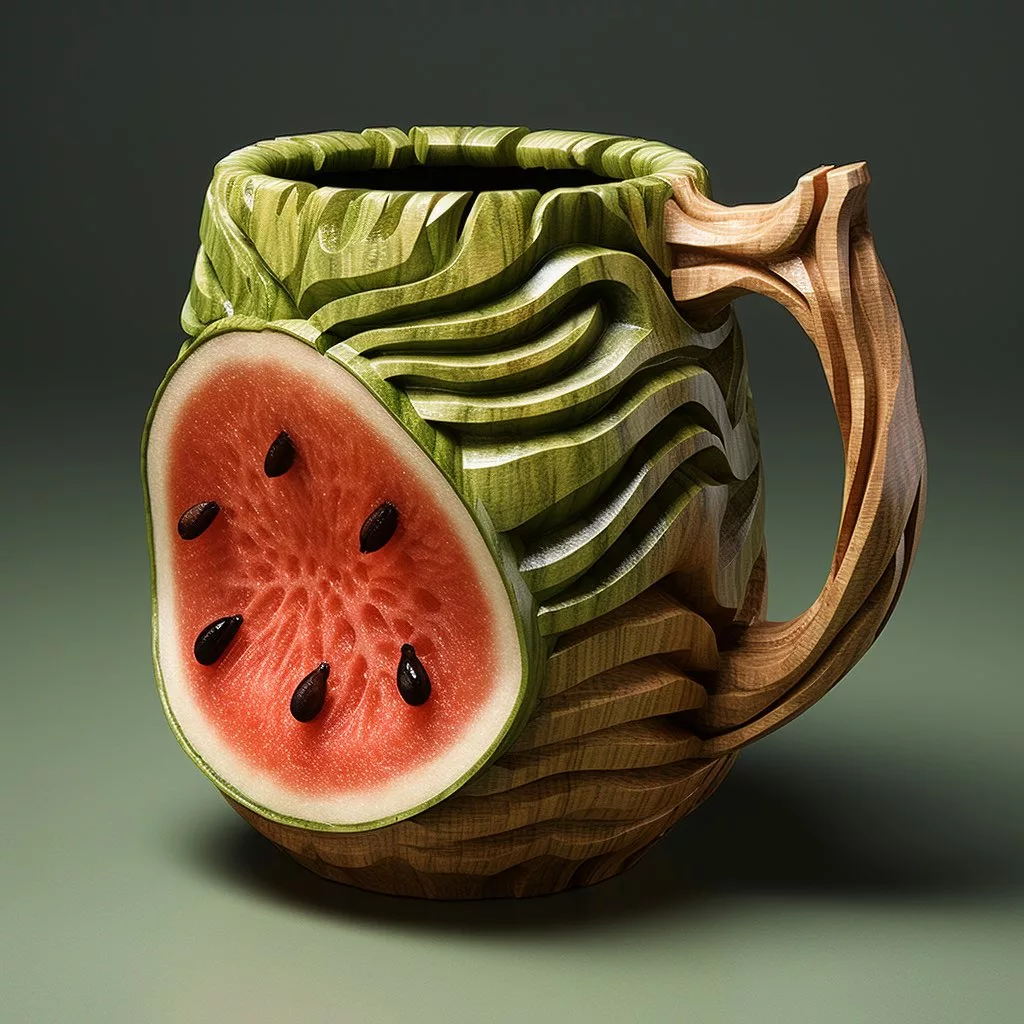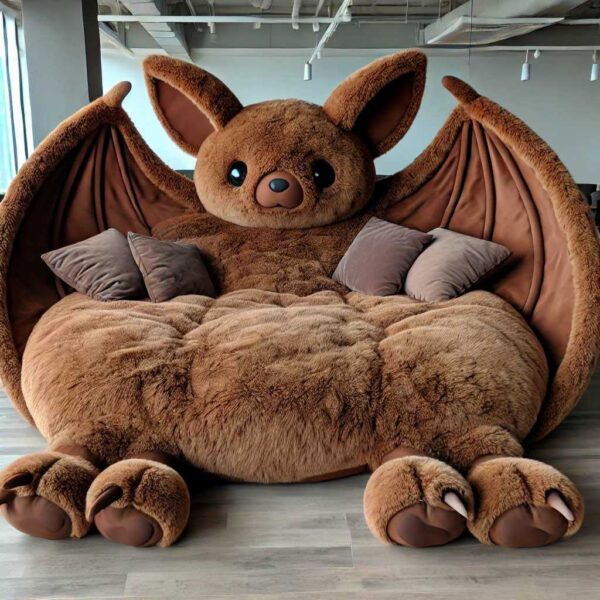In the world of modern interior design, furniture is more than just a functional necessity—it’s a statement. Each piece contributes to the overall aesthetic, comfort, and personality of a space. Among the many unique furniture designs that have captured the attention of designers and homeowners alike, the Caterpillar Sofa stands out as a bold yet versatile option. Named for its undulating, segmented form that mimics the natural curves of a caterpillar, this sofa has become synonymous with organic shapes, modular flexibility, and contemporary flair.
The appeal of the Caterpillar Sofa lies not only in its visual uniqueness but also in its adaptability to various interior styles. Whether you’re designing a minimalist Scandinavian living room or a vibrant bohemian lounge, the Caterpillar Sofa can serve as both a centerpiece and a conversation starter. Its flowing structure encourages informal seating arrangements, fosters social interaction, and introduces a sense of movement into static spaces.
This article explores how the Caterpillar Sofa can be integrated into different interior design schemes. We will delve into its design origins, examine its role in shaping spatial dynamics, and provide detailed ideas on incorporating it into diverse home environments. By understanding the essence of this distinctive furniture piece, readers will gain inspiration on how to elevate their interiors through thoughtful design choices.
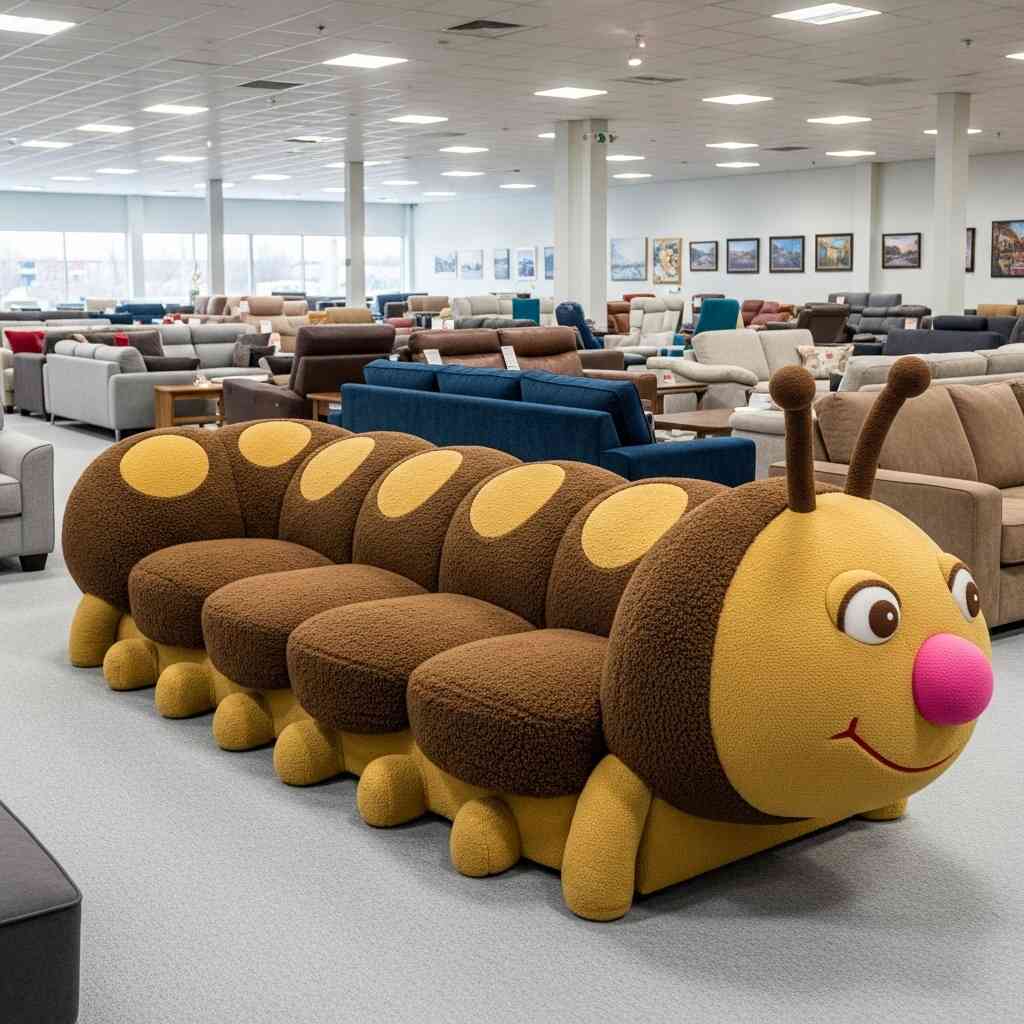
Contents
Understanding the Design Philosophy Behind Caterpillar Sofas
To fully appreciate the impact of Caterpillar Sofas in interior design, it’s essential to understand the philosophy and principles that guide their creation. These sofas are rooted in the concept of biomimicry—designing objects inspired by nature’s forms and functions. The caterpillar, with its soft, segmented body and fluid motion, serves as a metaphor for comfort, adaptability, and seamless integration within an environment.
From a structural standpoint, Caterpillar Sofas typically feature a series of connected modules that can be arranged in curved or linear formations. This modularity allows for customization based on the available space and the desired layout. Unlike traditional L-shaped or U-shaped sectionals, the Caterpillar Sofa embraces irregularity and asymmetry, offering a dynamic alternative that challenges conventional seating norms.
Designers often highlight the ergonomic benefits of these sofas. The individual segments conform to the human body, providing support where needed without sacrificing style. Upholstered in soft fabrics or luxurious leathers, they invite relaxation while maintaining a sleek profile. The curvature of the design also promotes face-to-face interaction, making it ideal for social gatherings or intimate conversations.
Another defining characteristic is the interplay between negative space and physical form. The gaps between each segment create visual interest, allowing light to filter through and adding depth to the room. This openness prevents the sofa from feeling bulky or overwhelming, even in smaller spaces. It’s a balance between presence and subtlety—something that resonates deeply with modern interior sensibilities.
In terms of materials, Caterpillar Sofas often incorporate sustainable practices. Many manufacturers prioritize eco-friendly textiles, low-VOC foams, and responsibly sourced wood or metal frames. This commitment to sustainability aligns with current trends in green interior design, appealing to environmentally conscious homeowners who seek both beauty and ethical responsibility in their decor choices.
Ultimately, the Caterpillar Sofa represents a fusion of artistry, functionality, and innovation. Its design reflects a broader shift in interior aesthetics toward organic shapes, modular configurations, and human-centric spaces. As we explore specific ways to integrate this sofa into interior settings, it becomes clear that its value extends beyond mere appearance—it influences how people interact with their surroundings and each other.
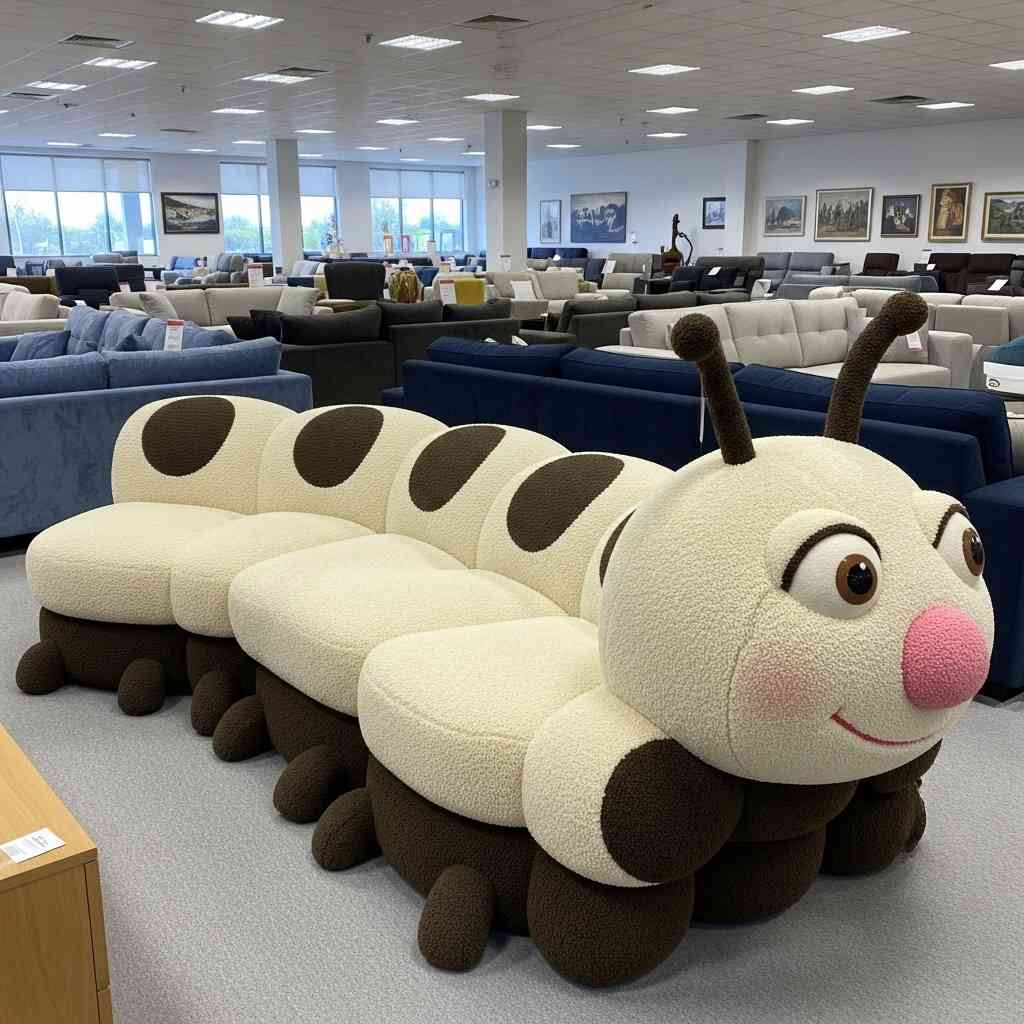
Caterpillar Sofas in Contemporary Living Spaces
When integrating Caterpillar Sofas into modern interiors, one must consider how the piece interacts with the surrounding architecture and existing décor elements. These sofas thrive in open-concept layouts, where their curvilinear form contrasts beautifully with clean lines and geometric structures. In a contemporary living room, for instance, a Caterpillar Sofa can act as a sculptural focal point that softens the angularity of walls, windows, and built-in shelving units.
A popular approach among interior designers is to pair the Caterpillar Sofa with minimalist furniture to maintain visual harmony. Sleek coffee tables, streamlined floor lamps, and abstract wall art complement the sofa’s organic shape without competing for attention. Neutral tones such as beige, gray, and white allow the sofa’s form to stand out, while subtle textures like wool rugs or linen curtains add warmth and dimension.
Lighting plays a crucial role in enhancing the aesthetic appeal of the Caterpillar Sofa. Recessed ceiling lights or track lighting can accentuate the contours of the sofa, casting gentle shadows that emphasize its layered structure. Alternatively, floor lamps placed strategically behind or beside the sofa can create a cozy ambiance, perfect for evening relaxation or entertainment.
One innovative way to utilize the Caterpillar Sofa in a contemporary setting is to position it along a curved wall or beneath an arched window. This placement not only highlights the sofa’s natural curvature but also creates a cohesive flow between the furniture and architectural features. For homes with high ceilings and large windows, draping sheer fabric panels behind the sofa adds a sense of drama and elegance.
Color psychology also comes into play when selecting upholstery for a Caterpillar Sofa in a modern interior. Deep blues and emerald greens evoke a sense of calm and sophistication, making them ideal for formal living areas. On the other hand, mustard yellows and terracotta hues inject energy and vibrancy, perfect for casual lounges or media rooms.
Accessories should be chosen carefully to avoid cluttering the space. A few well-placed throw pillows in complementary colors or patterns can enhance the visual appeal without overpowering the sofa’s design. Similarly, a curated selection of books, plants, or decorative sculptures on nearby side tables maintains a balanced and intentional look.
By thoughtfully considering proportions, color schemes, lighting, and accessories, the Caterpillar Sofa can seamlessly blend into a contemporary living space. It becomes more than just a seating option—it transforms into an artistic element that defines the character of the room.
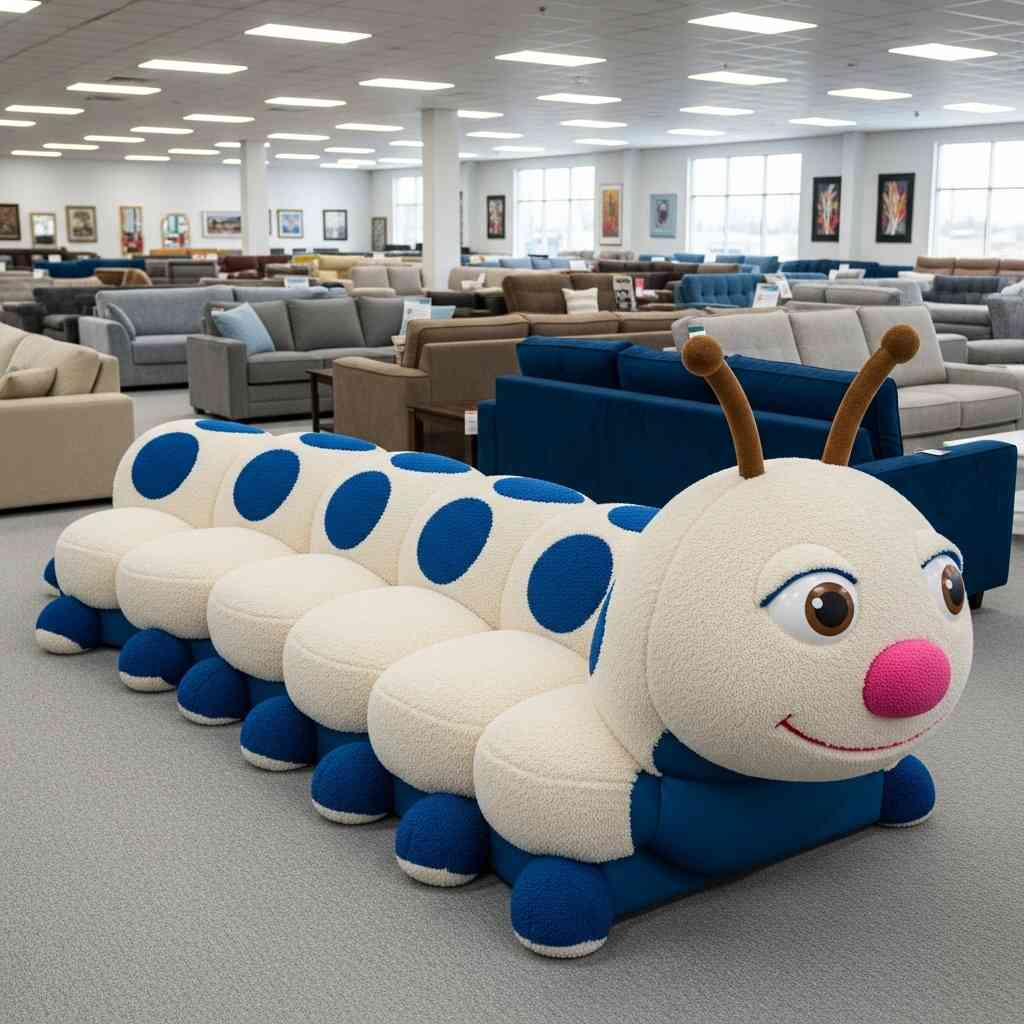
Caterpillar Sofas in Cozy, Bohemian Interiors
While the Caterpillar Sofa is often associated with sleek, modern interiors, it also lends itself beautifully to cozier, more eclectic design styles—particularly bohemian (boho) aesthetics. The inherent fluidity of the sofa’s form complements the free-spirited, layered look that defines bohemian interiors. In such spaces, the Caterpillar Sofa acts as a grounding element that brings together disparate textures, colors, and patterns in a harmonious way.
Bohemian design thrives on a mix of global influences, vintage finds, and natural materials. The Caterpillar Sofa, with its modular design and plush cushions, provides the perfect foundation for layering. Think oversized knit throws, patterned kilim pillows, and richly textured floor cushions arranged around the sofa’s curves. These elements not only enhance comfort but also reinforce the organic, unstructured vibe that boho interiors celebrate.
Natural materials are a cornerstone of bohemian design, and the Caterpillar Sofa integrates effortlessly with them. Wooden side tables made from reclaimed timber, woven rattan baskets, and macramé wall hangings all work beautifully alongside the sofa. Adding indoor plants—such as monstera leaves, hanging ivy, or potted succulents—brings life and vitality to the space, further emphasizing the connection between the sofa’s organic shape and the surrounding décor.
Color palettes in bohemian interiors tend to be warm and earthy, featuring shades like terracotta, ochre, deep greens, and muted browns. When choosing a Caterpillar Sofa for such a space, opting for upholstery in these tones can help anchor the room while still allowing for playful accents. Alternatively, a neutral-toned sofa offers a versatile base that can be easily updated with seasonal throws and cushions.
One of the most appealing aspects of using a Caterpillar Sofa in a bohemian setting is its ability to encourage communal living. The sofa’s winding shape invites multiple people to gather closely, fostering conversation and connection. Placing it near a fireplace or under a cluster of pendant lights creates an inviting nook that feels both intimate and expansive.
Layered rugs are another hallmark of bohemian interiors, and they work exceptionally well with the Caterpillar Sofa. Combining Persian runners, flat-weave mats, and shaggy sheepskins underneath the sofa adds depth and tactile richness. The varying textures and patterns echo the sofa’s own layered silhouette, reinforcing the overall design narrative.
Incorporating personal artifacts and travel souvenirs into the space enhances the storytelling aspect of bohemian design. Displaying ceramics, textiles, or artwork collected from different parts of the world around the Caterpillar Sofa adds character and authenticity. These pieces, when paired with the sofa’s flowing form, create a space that feels lived-in, meaningful, and uniquely personal.
Ultimately, the Caterpillar Sofa proves to be a versatile and expressive addition to bohemian interiors. Its ability to blend with organic textures, rich colors, and eclectic furnishings makes it a standout choice for those seeking a relaxed, creative living environment.
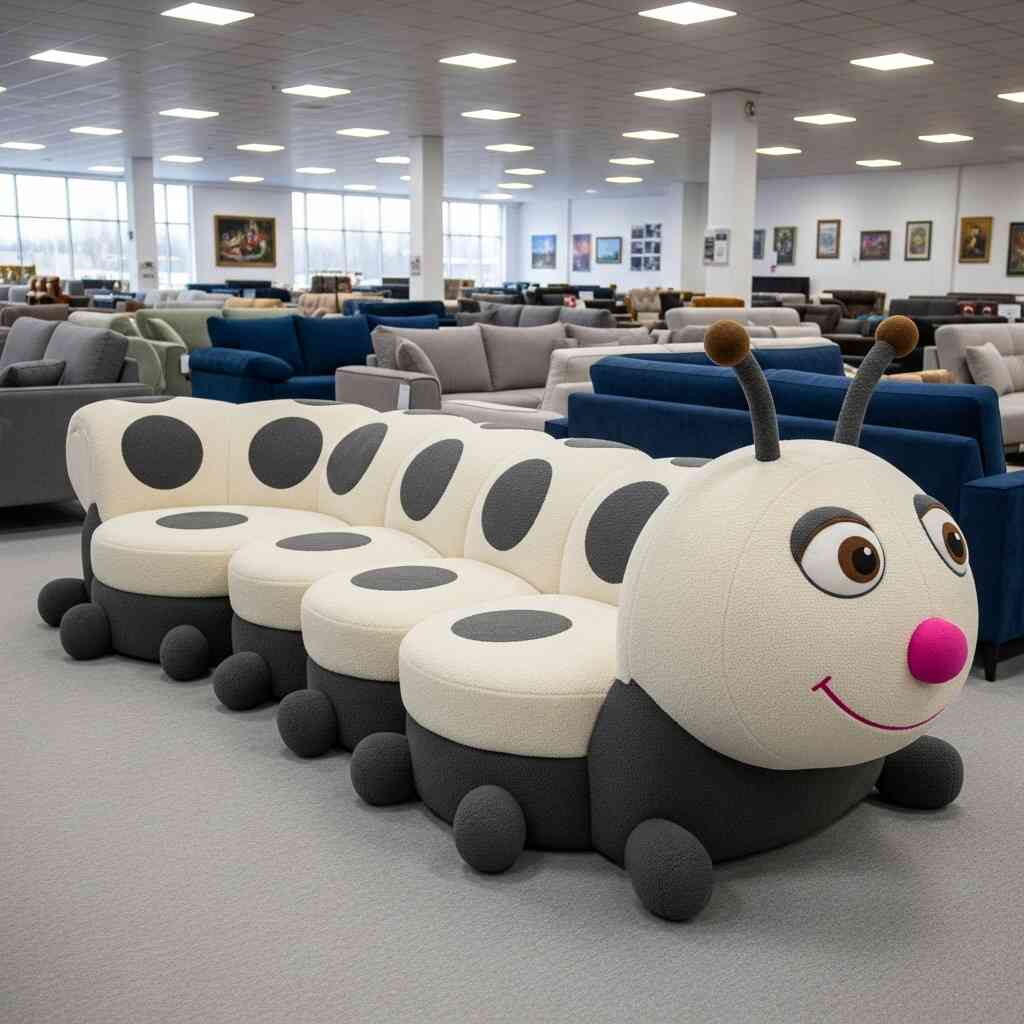
Caterpillar Sofas in Minimalist Scandinavian Homes
Scandinavian design is renowned for its emphasis on simplicity, functionality, and a strong connection to nature. At first glance, the Caterpillar Sofa—with its bold, undulating form—might seem at odds with the restrained aesthetic of Nordic interiors. However, when thoughtfully incorporated, it can serve as a striking contrast that enhances the overall design scheme rather than clashing with it.
Minimalism is central to Scandinavian design, focusing on clean lines, uncluttered spaces, and a limited color palette. The Caterpillar Sofa, with its modular composition and soft curves, introduces a subtle sense of movement and texture without overwhelming the space. Choosing a version upholstered in neutral tones such as light gray, ivory, or oatmeal ensures that the sofa blends seamlessly into a minimalist setting while still making a design statement.
Natural light is another key element in Scandinavian interiors, and the Caterpillar Sofa works well in bright, airy rooms. Positioned near large windows or glass doors, the sofa benefits from abundant daylight that highlights its contours and enhances the perception of space. Sheer linen curtains allow filtered sunlight to gently illuminate the sofa’s layered structure, creating a soothing atmosphere.
Wooden flooring is common in Scandinavian homes, and pairing it with a Caterpillar Sofa reinforces the natural, grounded feel of the interior. Light oak or bleached pine floors complement the sofa’s organic form, while a simple wool rug underfoot adds warmth and softness. The combination of hard and soft surfaces creates a balanced sensory experience that aligns with Scandinavian design principles.
Furniture in Nordic interiors tends to be understated yet purposeful. The Caterpillar Sofa fits this mold by offering both comfort and aesthetic appeal without being overly ornate. To maintain the minimalist vibe, it’s best to keep accompanying furniture simple—think floating shelves, low-profile side tables, and armless chairs. Avoiding excessive ornamentation ensures that the focus remains on the sofa’s unique shape and the overall tranquility of the room.
Decorative elements in Scandinavian homes are often sparse but meaningful. A few carefully selected items—such as ceramic vases, dried botanicals, or minimalist wall art—can enhance the space without detracting from its simplicity. These touches add personality while preserving the serene, uncluttered environment that defines Nordic design.
Incorporating greenery is another way to bridge the gap between the Caterpillar Sofa and Scandinavian aesthetics. Indoor plants like snake plants, fiddle-leaf figs, or trailing pothos bring life into the space and reinforce the connection to nature that is so important in Nordic design. Placing a tall plant next to the sofa or hanging a basket above it introduces vertical interest and softens the overall look.
Ultimately, the Caterpillar Sofa can thrive in a minimalist Scandinavian home when used as a deliberate design accent rather than a dominant feature. Its presence introduces a touch of organic elegance that complements the clean, functional ethos of Nordic interiors, proving that even the boldest furniture pieces can find a place in the most restrained settings.
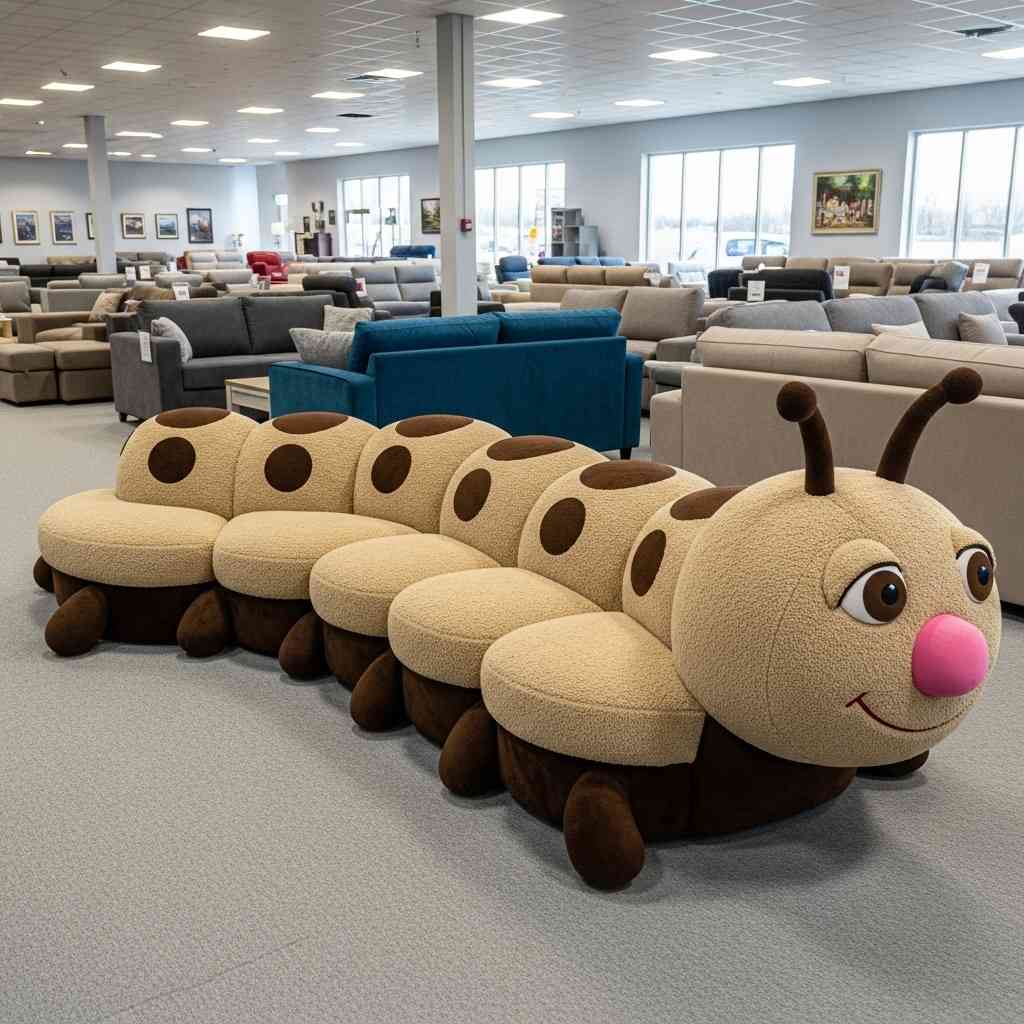
Caterpillar Sofas in Transitional Interior Designs
Transitional interiors strike a delicate balance between traditional and contemporary styles, blending classic elements with modern minimalism. In such spaces, the Caterpillar Sofa emerges as a versatile and visually engaging piece that bridges the gap between old and new. Its curvilinear form and modular structure make it an ideal fit for transitional design, where comfort meets sophistication and heritage meets innovation.
One of the hallmarks of transitional design is the use of neutral color palettes accented with deeper, richer tones. A Caterpillar Sofa upholstered in taupe, charcoal, or navy blue complements this approach by serving as a refined yet bold centerpiece. Pairing it with cream-colored drapes, tan leather armchairs, or dark wooden end tables creates a layered, timeless look that honors both classical and modern aesthetics.
Furniture in transitional interiors often combines traditional silhouettes with contemporary materials. The Caterpillar Sofa fits perfectly within this framework, offering a modern take on the classic sectional. Its segmented design introduces a sense of movement and informality, which contrasts elegantly with more structured pieces like wingback chairs or tufted ottomans. This juxtaposition enhances the room’s visual interest while maintaining a cohesive design language.
Lighting is another critical component of transitional interiors, and the Caterpillar Sofa benefits greatly from strategic illumination. Chandeliers with a mix of antique brass and clean lines, table lamps with linen shades, and recessed ceiling lights all contribute to a warm yet sophisticated ambiance. The interplay of light and shadow across the sofa’s curves adds depth and dimension, highlighting its sculptural qualities.
Textiles play a significant role in transitional design, and the Caterpillar Sofa offers ample opportunity for textural layering. Linen curtains, velvet throw pillows, and chunky knit blankets draped over the backrest introduce variety and tactile richness. These elements soften the space while reinforcing the balance between comfort and refinement that defines transitional interiors.
Artwork and decorative accessories should reflect the duality of transitional design—neither overtly traditional nor entirely modern. Framed black-and-white photographs, abstract paintings, and sculptural vases all work well in conjunction with the Caterpillar Sofa. Displaying these items on console tables or floating shelves adds personality without disrupting the room’s harmonious flow.
The placement of the Caterpillar Sofa in a transitional living area is also worth considering. Positioning it opposite a fireplace or beneath a gallery wall establishes a visual dialogue between past and present. The sofa’s curved form contrasts with the fireplace’s straight lines or the grid-like arrangement of framed art, creating a dynamic yet balanced composition.
Storage solutions in transitional interiors tend to be discreet yet functional. Built-in bookshelves, hidden cabinetry, and slim console tables help maintain a clutter-free environment. These elements allow the Caterpillar Sofa to remain the focal point without competing with excessive furniture or accessories.
Ultimately, the Caterpillar Sofa enhances transitional interiors by acting as a unifying element that connects contrasting design philosophies. Its ability to coexist with both traditional craftsmanship and modern minimalism makes it a powerful tool for creating spaces that feel both familiar and fresh.
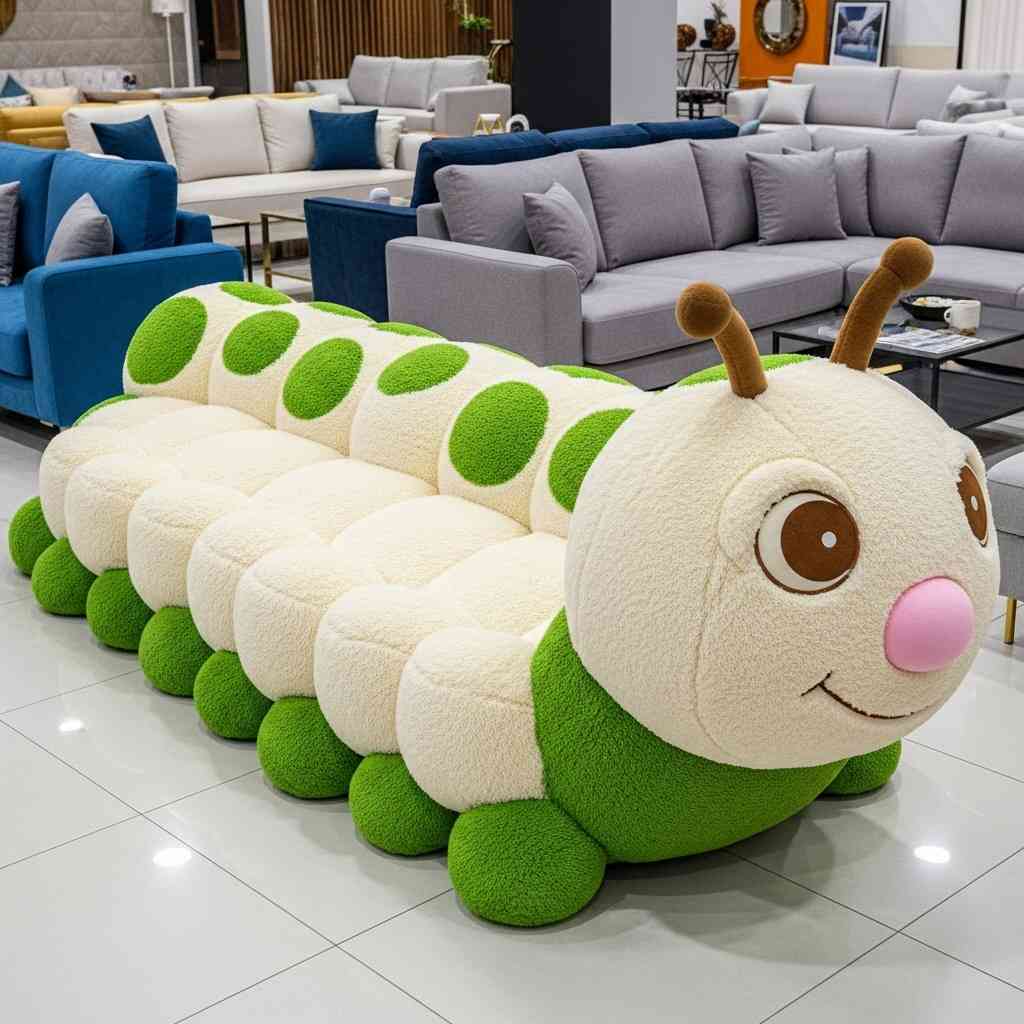
Caterpillar Sofas in Open-Plan Layouts
Open-plan living has become increasingly popular in modern home design, especially in urban apartments and contemporary residences. These layouts emphasize connectivity, fluidity, and multifunctionality, encouraging a seamless transition between living, dining, and kitchen areas. In such environments, the Caterpillar Sofa emerges as a strategic design solution that organizes space without imposing rigid boundaries.
One of the primary advantages of the Caterpillar Sofa in open-plan layouts is its ability to define zones without enclosing them. Unlike traditional partition walls or bulky furniture, the sofa’s undulating form subtly delineates the living area while maintaining visual continuity with adjacent spaces. Arranging the sofa in a C-shape or semi-circle helps create an intimate gathering spot that still feels integrated with the rest of the home.
Positioning the Caterpillar Sofa perpendicular to the dining table or kitchen island can enhance spatial organization. This setup allows for easy transitions between activities—whether entertaining guests in the living area or preparing meals in the kitchen. The sofa’s modular design makes it easy to adjust its configuration based on changing needs, whether hosting a dinner party or relaxing with family.
In larger open-plan spaces, the Caterpillar Sofa can serve as an anchor that grounds the room. Placing it against a long wall or beneath a statement chandelier draws attention to the center of the space, preventing it from feeling too vast or disconnected. This anchoring effect is particularly useful in lofts or industrial-style homes with high ceilings and minimal architectural detailing.
Lighting considerations are crucial in open-plan layouts, where different zones require distinct atmospheres. The Caterpillar Sofa benefits from layered lighting—overhead fixtures for general illumination, task lighting for reading or working, and ambient lighting to set a mood. Pendant lights above the dining area or recessed lights in the kitchen should be balanced with softer, diffused lighting around the sofa to maintain a cohesive yet differentiated space.
Color coordination is another factor in ensuring harmony within an open-plan layout. Since these spaces lack physical dividers, maintaining a unified color scheme helps unify different zones. The Caterpillar Sofa can either blend into the overall palette or act as a contrasting focal point, depending on the desired effect. For example, a neutral-toned sofa pairs well with a monochromatic kitchen and dining area, while a bold-colored sofa adds vibrancy to a more subdued environment.
Furniture placement in open-plan settings must also account for traffic flow. The Caterpillar Sofa should be positioned in a way that allows easy movement between zones without obstructing pathways. Keeping a minimum clearance of 30 inches between the sofa and other furniture ensures accessibility while preserving the openness of the space.
Rugs are an effective tool for defining areas within an open-plan layout. Placing a large area rug beneath the Caterpillar Sofa and adjacent seating creates a visual boundary that separates the living zone from the dining or kitchen area. The rug also adds warmth and texture, reinforcing the coziness of the seating arrangement.
Ultimately, the Caterpillar Sofa excels in open-plan layouts by offering both spatial definition and aesthetic cohesion. Its adaptable form and inviting presence make it an ideal choice for homeowners looking to maximize functionality without compromising on style.
Caterpillar Sofas in Compact Urban Apartments
Space optimization is a top priority in compact urban apartments, where square footage is limited and every inch counts. In such environments, furniture must be both functional and space-efficient. The Caterpillar Sofa, with its modular and flexible design, proves to be an excellent solution for small-space living. Its ability to curve and contour around tight corners or fit snugly against walls makes it a practical yet stylish choice for apartment dwellers.
One of the key advantages of the Caterpillar Sofa in small apartments is its customizable footprint. Unlike standard sectionals that require a fixed amount of space, the Caterpillar Sofa can be configured to suit the specific dimensions of a room. Whether it’s arranged in a half-circle to create a cozy corner or stretched along a wall to maximize seating, the sofa adapts to the available space without overwhelming it.
Vertical space is often underutilized in compact apartments, but the Caterpillar Sofa can help draw attention upward. Pairing it with tall bookshelves, floor lamps, or wall-mounted art creates a sense of height and openness. Additionally, selecting a sofa with a low profile keeps the line of sight unobstructed, making the room appear larger than it actually is.
Storage is another crucial consideration in small apartments, and the Caterpillar Sofa can be paired with multifunctional furniture to enhance utility. Ottomans with hidden compartments, nesting side tables, and wall-mounted consoles provide additional storage without taking up valuable floor space. These elements work in tandem with the sofa to maintain a tidy, organized environment.
Mirrors are a designer’s secret weapon in small spaces, and they pair beautifully with the Caterpillar Sofa. Placing a large mirror opposite or above the sofa reflects light and creates the illusion of depth. This technique is especially effective in narrow living areas where the sofa is placed against a long wall.
Color choices play a significant role in maximizing the perceived size of a small apartment. Light-colored upholstery on the Caterpillar Sofa—such as pale grays, creams, or soft pastels—helps maintain an airy feel. Accenting with darker or bolder colors in accessories or artwork adds visual interest without making the space feel cramped.
Natural light is essential in small apartments, and the Caterpillar Sofa should be positioned to take full advantage of it. Placing the sofa near a window or sliding door ensures that it benefits from daylight, reducing the need for artificial lighting during the day. Blinds or sheer curtains can control glare while maintaining a sense of openness.
Lastly, the Caterpillar Sofa encourages a sense of intimacy in compact living spaces. Its curved form invites close conversation and fosters a feeling of togetherness, making even the smallest apartment feel warm and welcoming. With thoughtful placement and styling, the sofa becomes more than just a piece of furniture—it transforms into the heart of the home.
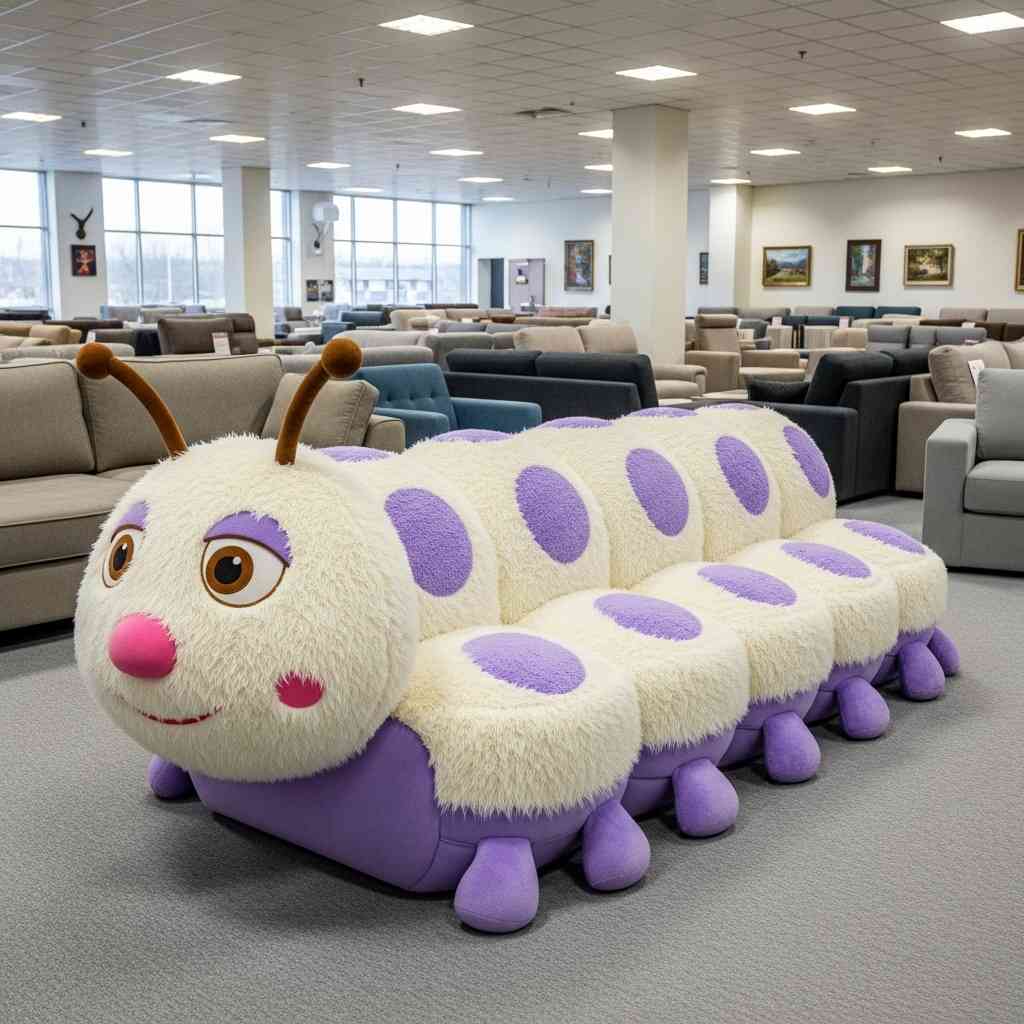
Caterpillar Sofas in Family-Friendly Homes
Creating a family-friendly interior requires balancing durability, comfort, and aesthetics—a challenge that the Caterpillar Sofa rises to meet with ease. Its modular design allows for flexible seating arrangements that accommodate children, pets, and guests, while its soft, inviting form makes it a go-to spot for family gatherings, movie nights, and quiet afternoons spent reading together.
One of the most practical aspects of the Caterpillar Sofa in family homes is its resilience. Many versions are designed with stain-resistant or washable upholstery, making them ideal for households with young children or pets. Removable cushion covers and durable fabrics ensure that spills and messes don’t spell disaster, allowing parents to maintain a stylish yet functional living space.
The sofa’s segmented structure also offers versatility in how families interact with it. Children can sprawl out comfortably across multiple sections, while adults can recline on elevated headrests or lean against the curved ends for added support. This adaptability makes the Caterpillar Sofa suitable for a wide range of activities—from homework sessions to game nights.
Safety is another consideration in family-friendly interiors, and the Caterpillar Sofa’s design addresses this naturally. Without sharp corners or exposed edges, the sofa minimizes the risk of bumps and bruises, making it a safer option for active households. Additionally, its low-to-the-ground profile makes it easy for toddlers to climb onto and off of independently.
Incorporating child-friendly accessories enhances the usability of the Caterpillar Sofa without compromising its style. Soft poufs or floor cushions scattered around the sofa provide extra seating for little ones, while built-in side tables offer convenient spots for drinks, snacks, or toys. Storage bins tucked underneath or beside the sofa help keep clutter at bay, maintaining a tidy appearance.
Color and pattern choices can also reflect a family’s personality while keeping the space cohesive. Playful prints, cheerful accent pillows, and colorful rugs inject fun into the room without overwhelming the sofa’s elegant form. Personalized touches like framed family photos or artwork created by children add warmth and individuality.
Ultimately, the Caterpillar Sofa supports the dynamic lifestyle of a family home by combining comfort, durability, and design. It becomes a hub of activity and connection, proving that stylish furniture can also be highly functional for everyday living.
Conclusion
The Caterpillar Sofa is more than just a piece of furniture—it is a design statement that embodies fluidity, comfort, and adaptability. Across various interior styles, from minimalist Scandinavian homes to vibrant bohemian lounges and compact urban apartments, the Caterpillar Sofa consistently proves its versatility and aesthetic value. Its modular form allows for endless customization, while its organic shape introduces a sense of movement and warmth into any space.
Whether serving as a focal point in an open-plan living area or a cozy gathering spot in a family-friendly home, the Caterpillar Sofa enhances both function and style. It encourages social interaction, supports ergonomic comfort, and integrates seamlessly with different design philosophies. From transitional interiors that blend tradition with modernity to contemporary spaces that embrace bold, sculptural elements, the Caterpillar Sofa adapts with grace and intention.
As interior design continues to evolve, the Caterpillar Sofa stands as a testament to the power of innovative thinking. It challenges conventional seating arrangements, redefines spatial relationships, and inspires creativity in how we inhabit our homes. For those seeking a unique yet practical addition to their living space, the Caterpillar Sofa offers a compelling solution—one that marries form and function in a truly remarkable way.

